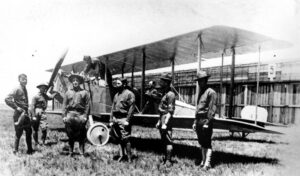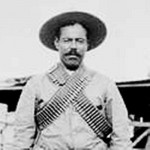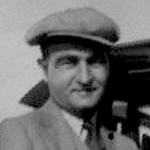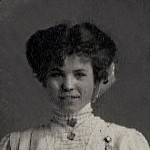pancho villa
 Imagine a time when there was no air force, or for that matter, airplanes. Of course, for those of us living today, that would be very hard to imagine…in fact, maybe impossible. Nevertheless, before the Wright brothers made flight possible, there was not only no planes, but no air force. Then, in 1914, things were about to change forever.
Imagine a time when there was no air force, or for that matter, airplanes. Of course, for those of us living today, that would be very hard to imagine…in fact, maybe impossible. Nevertheless, before the Wright brothers made flight possible, there was not only no planes, but no air force. Then, in 1914, things were about to change forever.
The First Aero Squadron was formed in 1914. It was organized after the start of World War I, but it was first used because of the Mexican revolutionary, Pancho Villa, who was initially a bandit, but later became a general in the Mexican Revolution. He was a key figure in the revolutionary violence that forced out President Porfirio Díaz and brought Francisco Madero to power in 1911. Pancho Villa was an excellent guerrilla leader who fought against the regimes of both of those men. After 1914, he engaged in civil war and banditry. He became notorious in the United States for his attack on Columbus, New Mexico, in 1916, and something had to be done
On March 9, 1916, Villa, who opposed American support for Mexican President Venustiano Carranza, led a band of several hundred guerrillas across the border on a raid of the town of Columbus, New Mexico. Seventeen Americans were killed in the battle. On March 15, President Woodrow Wilson ordered, US Brigadier General John J Pershing to launch a punitive expedition into Mexico to capture Villa. Four days later, the First Aero Squadron was sent into Mexico to scout and relay messages for General Pershing. On March 19, 1914, Eight Curtiss “Jenny” planes of the First Aero Squadron took off from Columbus, New Mexico, in the first combat air mission in United States history. The squadron was on a support mission for the 7,000 US troops who invaded Mexico to capture Villa.

Despite encountering numerous mechanical and navigational problems, the American pilots flew hundreds of missions for Pershing during which they gained important experience that would later be used by fliers over the battlefields of Europe. Unfortunately, during the 11-month mission, US forces failed to capture the elusive revolutionary, and Mexican resentment over US intrusion into their territory led to a diplomatic crisis. In late January 1917, with President Wilson under pressure from the Mexican government and more concerned with the war overseas than with bringing Villa to justice, the Americans were ordered home. The missions were over.
 One day in mid 1916 or early 1917, my great uncle, John Spare, who would marry my great aunt, Mina Schumacher on January 8, 1921, was involved in an altercation along the Mexican border, while he was serving in Company B of the North Dakota National Guard. John had enlisted on June 30, 1916 at the age of just 17 years, and his company was assigned to the United States/Mexican border, as we were in the middle of a war with Mexico…really this was border patrol, because there were some pretty dangerous characters running around Mexico, terrorizing the people. One of the most notorious was Pancho Villa. The viciousness of José Doroteo Arango Arámbula…better known as Pancho Villa, was well documented. In a story told by a survivor of his first raid on March 7, 1916, the ruthlessness of this villain is made clear. Pancho Villa and 600 of his renegade followers rode into Columbus, Mexico (population 350) at four o’clock on that morning, riding horses and mules stolen from the Calvary at Camp Turlong just across the border. The camp was the headquarters for the 13th Calvary, and there were about 120 soldiers stationed there. Pancho and his men stole everything of value in the town, and set fire to all its buildings. Many merchants were killed, but the townspeople resisted so strongly that Pancho lost 100 men. He nevertheless, escaped to ride again and continue his raids on both sides of the border.
One day in mid 1916 or early 1917, my great uncle, John Spare, who would marry my great aunt, Mina Schumacher on January 8, 1921, was involved in an altercation along the Mexican border, while he was serving in Company B of the North Dakota National Guard. John had enlisted on June 30, 1916 at the age of just 17 years, and his company was assigned to the United States/Mexican border, as we were in the middle of a war with Mexico…really this was border patrol, because there were some pretty dangerous characters running around Mexico, terrorizing the people. One of the most notorious was Pancho Villa. The viciousness of José Doroteo Arango Arámbula…better known as Pancho Villa, was well documented. In a story told by a survivor of his first raid on March 7, 1916, the ruthlessness of this villain is made clear. Pancho Villa and 600 of his renegade followers rode into Columbus, Mexico (population 350) at four o’clock on that morning, riding horses and mules stolen from the Calvary at Camp Turlong just across the border. The camp was the headquarters for the 13th Calvary, and there were about 120 soldiers stationed there. Pancho and his men stole everything of value in the town, and set fire to all its buildings. Many merchants were killed, but the townspeople resisted so strongly that Pancho lost 100 men. He nevertheless, escaped to ride again and continue his raids on both sides of the border.
In haste, the United States sent soldiers to guard the borders. Unfortunately they were not well equipped,  because of the unpreparedness of the military machine at the time. Many of those men, including my great uncle’s company were sent down there without ammunition, and told that those who had ammunition would fight an attack if it came, while the others would dive under the bridge until the attack was over. They neglected to tell them that none of them had ammunition, and the men did not know that until all of them jumped under the bridge at the same time. It was then that the horrible truth was revealed. The hope, apparently, was to make Pancho think this was a large army to be reckoned with, in the hope that they would not try to attack them. They sorely misjudged the ruthlessness of this man, but the good news was that Pancho and his men were already in a gun fight with the 13th Calvary, so they took little notice of this small band of men hiding under the bridge, hoping that the villain and his men didn’t circle around and come back. I don’t know how long Great Uncle John was stationed there, but it is my guess that one day was too much…unless they were given some ammunition, that is.
because of the unpreparedness of the military machine at the time. Many of those men, including my great uncle’s company were sent down there without ammunition, and told that those who had ammunition would fight an attack if it came, while the others would dive under the bridge until the attack was over. They neglected to tell them that none of them had ammunition, and the men did not know that until all of them jumped under the bridge at the same time. It was then that the horrible truth was revealed. The hope, apparently, was to make Pancho think this was a large army to be reckoned with, in the hope that they would not try to attack them. They sorely misjudged the ruthlessness of this man, but the good news was that Pancho and his men were already in a gun fight with the 13th Calvary, so they took little notice of this small band of men hiding under the bridge, hoping that the villain and his men didn’t circle around and come back. I don’t know how long Great Uncle John was stationed there, but it is my guess that one day was too much…unless they were given some ammunition, that is.
Great Uncle John survived the war, and returned to Fargo, North Dakota, where he married my Great Aunt Mina. While he would still serve in the military for a long time, their lives would be happy and blessed with a daughter, Pauline Jessie Spare, who always went by Paula, on March 23, 1922. Pancho Villa continued to wreak havoc in Mexico, and along the border, until 1920, when he retired. For whatever reason, he was given a large estate, which he turned into a Military Colony for his formers Villistas, as his men a become known. Then, in  1923, Pancho decided to once again involve himself in Mexican politics, and on July 20, 1923, when he was killed by an assassin, who had probably been hired by the president of Mexico, Álvaro Obregón. When I read that Pancho Villa had been assassinated on this day in 1923, I remembered that Great Uncle John Spare had once had a close encounter with him, and I wondered how he and Great Aunt Min felt when they heard the news. Parral, Chihuahua, Mexico was a long way from Fargo, North Dakota, and a number of years had passed, so maybe they gave it little thought, or maybe they breathed a sigh of relief, knowing what kind of a man he was, and just how close Great Uncle John had come to losing his life that day, along the United States and Mexican Border.
1923, Pancho decided to once again involve himself in Mexican politics, and on July 20, 1923, when he was killed by an assassin, who had probably been hired by the president of Mexico, Álvaro Obregón. When I read that Pancho Villa had been assassinated on this day in 1923, I remembered that Great Uncle John Spare had once had a close encounter with him, and I wondered how he and Great Aunt Min felt when they heard the news. Parral, Chihuahua, Mexico was a long way from Fargo, North Dakota, and a number of years had passed, so maybe they gave it little thought, or maybe they breathed a sigh of relief, knowing what kind of a man he was, and just how close Great Uncle John had come to losing his life that day, along the United States and Mexican Border.

